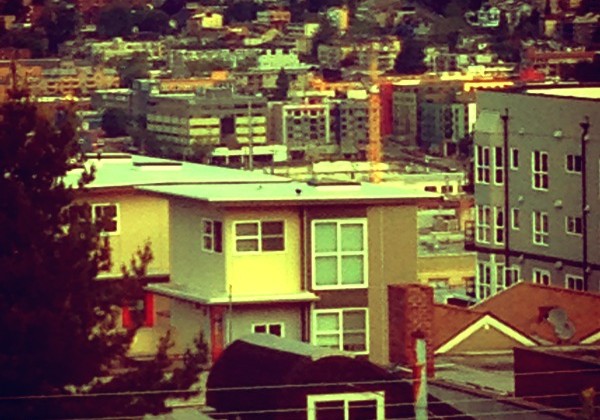Another Neighbor for Microhousing
I have had to write about the “angry neighbors” many times here and elsewhere. These are the folks who talk about how renters don’t have an “investment” in their “established neighborhood.” But now and then there is a glowing bright spot not just of tolerance but understanding. At Capitol Hill Seattle Jason Weill writes a very honest and smart take on his neighboring microhousing building, the Altura.
My neighborhood retains its class diversity. I don’t want to live in a monoculture. At the Seattle Night Out party my building hosted in August 2014, I met neighbors from around my block including several Alturra residents. I appreciate that my neighborhood can attract people young and old, rich and poor, with many different occupations. aPodments are one way to keep rents affordable for more people, and Alturra has attracted a surprisingly broad mix of students, full-time workers, and recent college grads saving up for their first real apartment.
In time I think we’ll look back on the micro-apartment trend and laugh at the worry it stirred up. These buildings are going up to cash in on a hunger for inexpensive housing at a time when market-rate buildings are in short supply. As of 2013 the city had added 15,000 jobs year-over-year while only 9,000 housing units were expected to become available for each of the next five years. With Amazon on pace to have enough office space for 71,500 Seattle employees by 2019, the math favors landlords and builders today. Ten years from now I expect that we’ll have a more resident-friendly housing market once all the construction is complete and companies have tapered off their hiring.
There you have it. Had our City Council listened to our concerns and considered the fact that skeptical neighbors, even angry ones would eventually get beyond their worries once projects were built and full of fellow human beings. And Weill goes on to show what most people intuitively understand if they think about it enough: rents change over time, and even go down.
There’s a sense that rents can “never” go down in Seattle, but I’ve seen it firsthand in 2008–09 when Washington Mutual had collapsed and when tech companies put a hold on hiring. A rent drop can and will happen again. Maybe these micro-apartment buildings will eventually be pared down to have fewer apartments by knocking down some or all interior walls. With the most modification, aPodments can become groups of townhouses — the last housing innovation that caused outrage in Seattle’s residential neighborhoods. Alternatively, like so many residential buildings that have gone up here in the past 120 years, they can be sold, knocked down, and rebuilt in a new developer’s image. After all, this is Seattle, where we’ll get it right eventually.
Weill still shows a bit of bias with his reference to “real apartments,” but all in all he gets it. This editorial is a welcome read. Maybe the Mayor’s Housing Affordability and Livability Agenda (HALA) Committee will listen to Weill and neighbors like him more than the angry ones.


